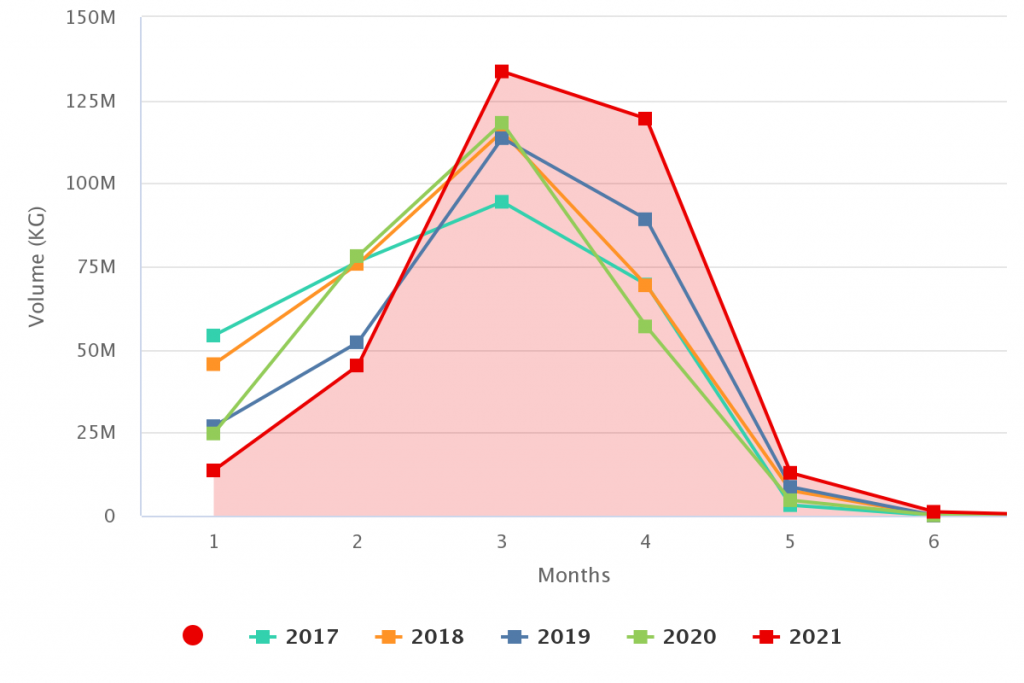Chile: Regions begin 2021-22 table grape export season
Overview of Chilean table grapes exports to the U.S. market, complemented by charts from Agronometrics. Original published on December 15, 2021.
Both the Atacama and Coquimbo regions have begun table grape exports for the 2021-22 season, which is looking up from last year and despite water shortages.
Daniela Norambuena, executive secretary of the Northern Agricultural Society (SAN) said that there have been positive expectations as well as production potential for traditional and patented table grapes.
“The increase in patented varieties entering production is a positive trend and is similar in all producing areas of the country, where according to the Association of Exporters, they have estimated a 29 percent or 84 million box increase year-on-year,” she said.
Regarding the harvests, Norambuena said that they began last week in the Copiapó Valley – with the help of the Minister of Agriculture, María Emilia Undurraga – and also in the Coquimbo Region.
The first producing vines began mainly with varieties such as Flame, Prime Seedless and Midnight Beauty.
In general, the most exported varieties are Red Seedless, Green Seedless, Red Globe and Black Seedless, according to ASOEX.
Challenges for Chilean table grapes
As the season progresses, the Elqui and Limarí valleys may see some challenges mainly due to water deficit, especially when looking at the late varieties in these areas.
“Chilean fruit is going to the U.S. and as California has been affected been various climatic events such as heat and extreme rains, our fruit becomes very important commercially which could lead to an earlier season end,” Norambuena said.

Source: USDA Market News via Agronometrics.
(Agronometrics users can view this chart with live updates here)
Though labor availability in the northern area of Chile seems better than last season, supply and costs of materials, as well as shipping rates, are affecting logistics around the world.
All agricultural production in the northern regions depends on the availability of water over the coming months.
Citrus production for next year is completely dependent on the water issue, Jorge Navarro, regional director of SAG said.
The citrus season that already ended saw an increase that wasn’t expected despite water tables being low in the reservoirs.
Compared to 2020, citrus production in terms of volume grew by almost 20 percent and reached about five million boxes.
The News in Charts is a collection of stories from the industry complemented by charts from Agronometrics to help better tell their story.
Access the original article with this (Link)






